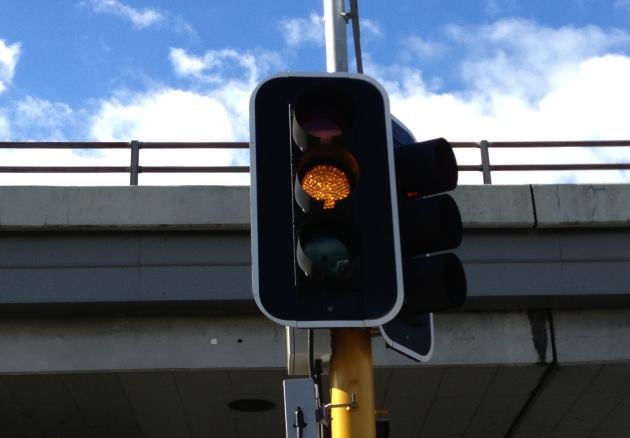A. Speed up to get through the lights
A. Speed up to get through the lights
B. Stop if it's safe to do so
C. Stop if you are more than 20 metres from the intersection
The amber or yellow traffic light comes after a green light and indicates that the lights are just about to turn red. You should stop if it's safe to do so, and this will vary according to the road conditions, the braking ability of your car, and the ability for people behind you to stop.
The length of time that the yellow light displays depends on the speed of the intersection. A typical yellow light in an urban area lasts for approximately four seconds. We timed several downtown Auckland lights to come up with an average of 3.8 seconds. In the UK, yellow lights are 1 second per 10mph (16kph) speed limit. Using the same logic the equation would be 1 second every 13.2kph at least for the amber lights we measured.
Yellow traffic lights on faster streets may stay on longer because it takes longer for vehicles to stop.
Red and green traffic lights have variable phases, depending on the intersection. More roads joining the intersection will mean a longer red phase. A minor road entering a major intersection could have a very short green phase because there might only ever be one or two vehicles waiting at any one time, whereas a large intersection with a main road travelling through it could see very long green phases on the main road.
